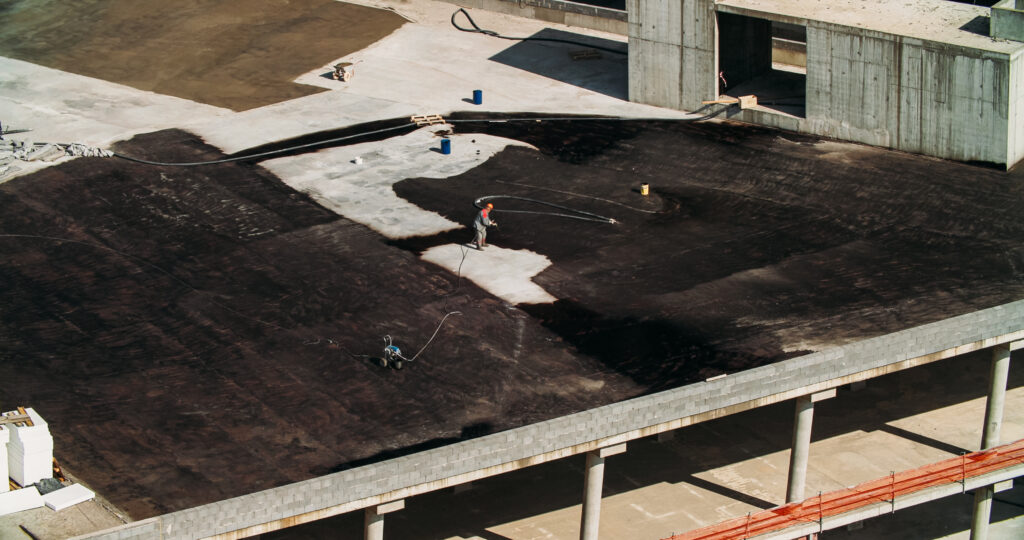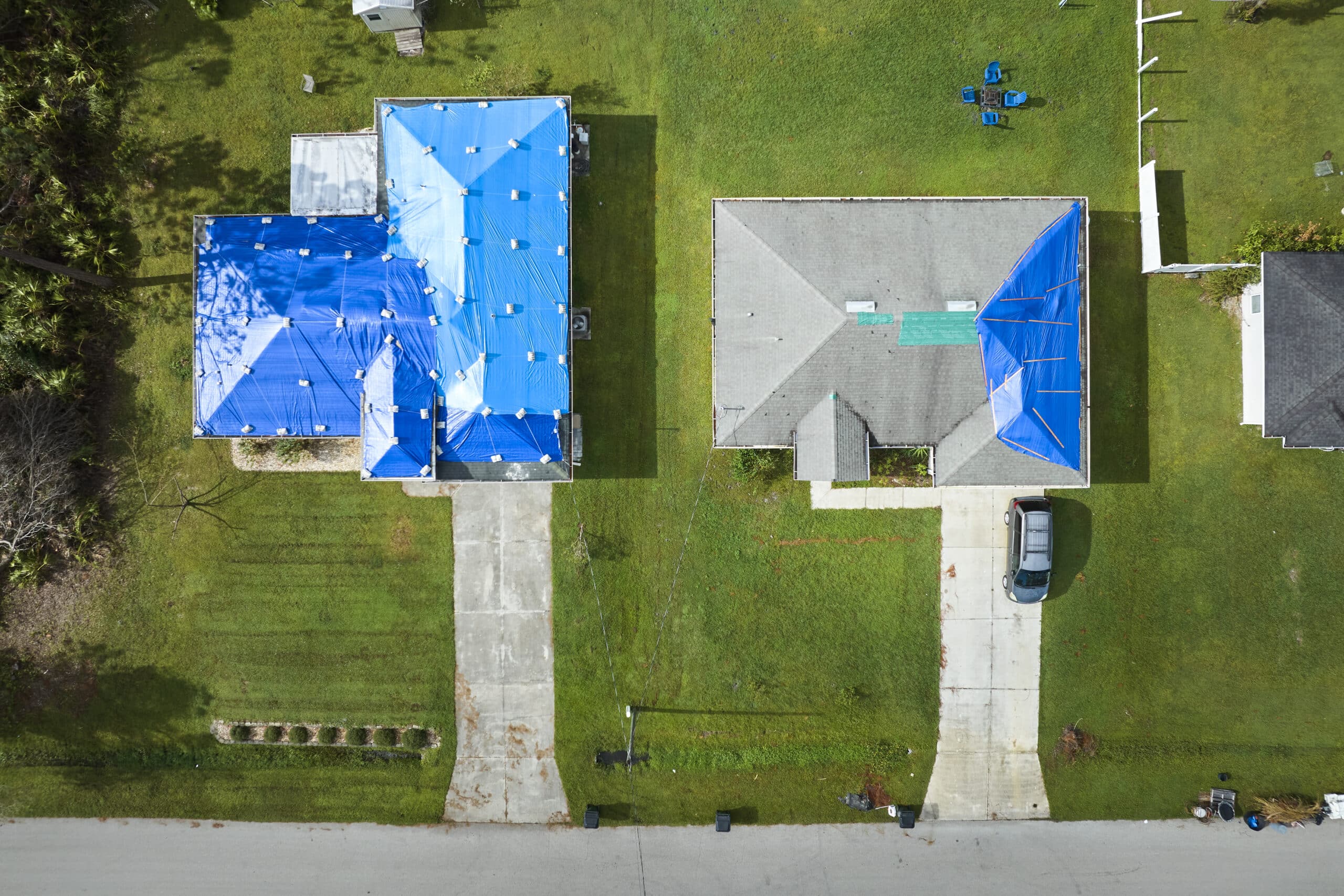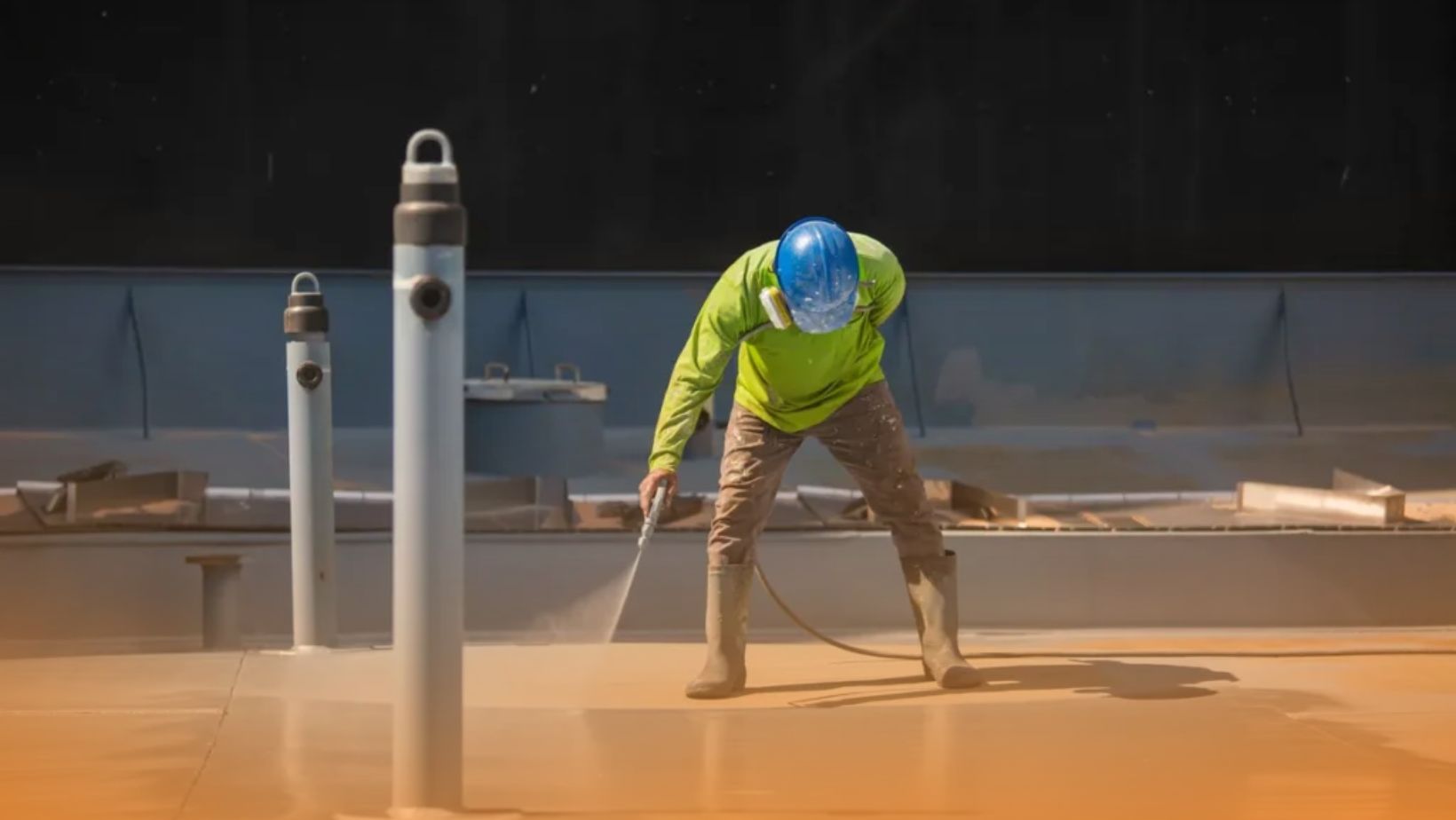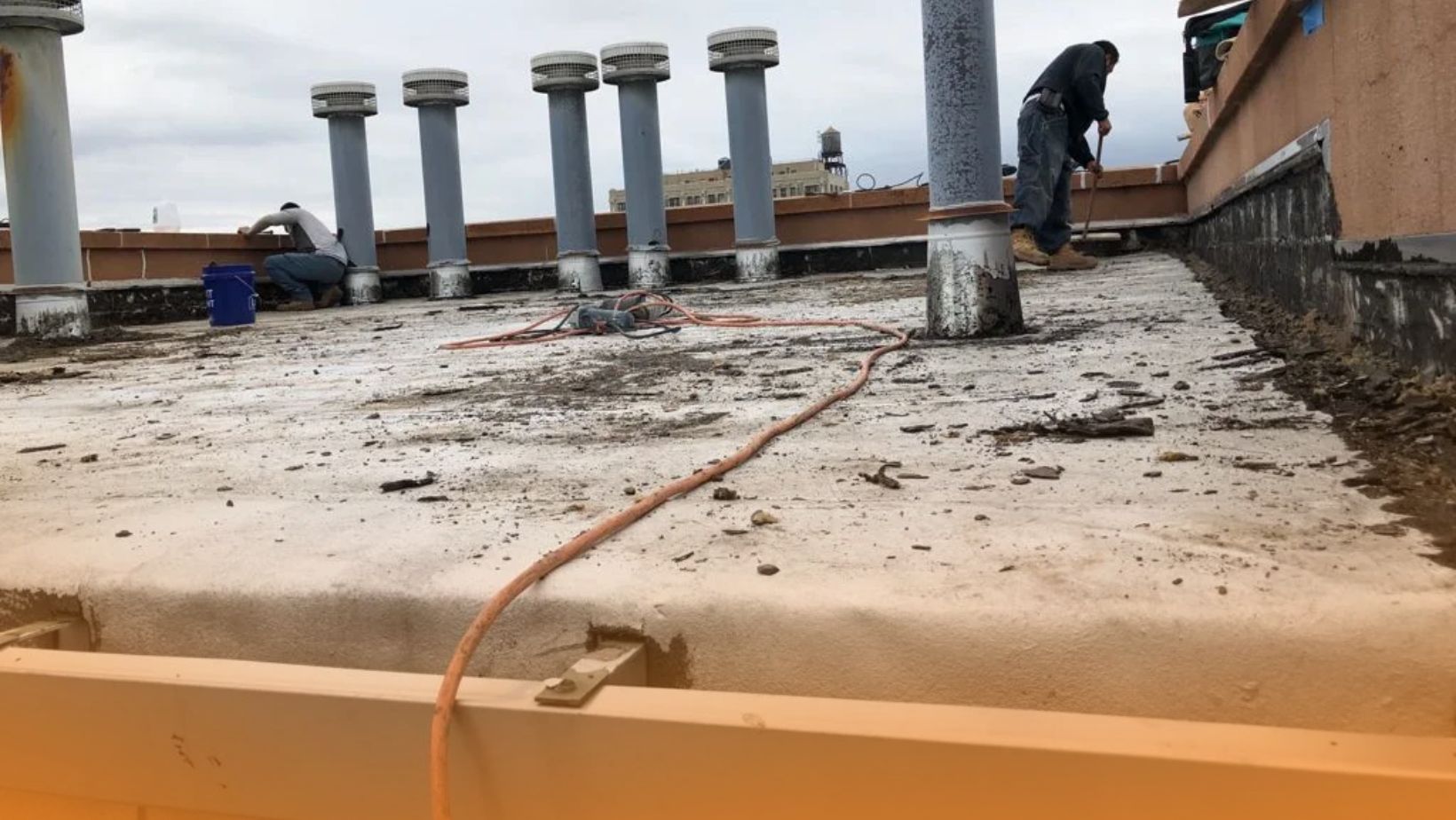Table of Contents
Confused about the differences between a roof membrane and a roof coating? At SmartSeal, we’re here to help you understand these two essential roofing solutions. Knowing the distinctions can help you make an informed decision for your commercial roof’s protection and longevity.
Roof Membrane vs. Coating
Roof membranes and roof coatings serve similar purposes but in different ways. Both are designed to protect your roof, but they have distinct characteristics, applications, and benefits.
Understanding Roof Membranes
A roof membrane is a continuous layer of material installed on a roof to provide waterproofing and protection. They are typically made from materials like rubber, PVC, or TPO (thermoplastic polyolefin).
Roof Membrane Benefits
- Waterproofing: Roof membranes offer excellent waterproofing, preventing water infiltration.
- Durability: These membranes are highly durable and can withstand harsh weather conditions.
- Flexibility: Roof membranes can accommodate structural movements without cracking.
- Long Lifespan: With proper installation and maintenance, roof membranes can last 20-30 years.
Understanding Roof Coatings
Roof coatings are liquid-applied products that create a protective layer on top of the existing roof surface. Common types include acrylic, silicone, and elastomeric coatings.

Roof Coating Advantages
- Ease of Application: Roof coatings are easy to apply with brushes, rollers, or spray equipment.
- Reflectivity: Many coatings reflect sunlight, reducing heat absorption and energy costs.
- Cost-Effective: Coatings are generally less expensive than installing a new roof membrane.
- Seamless Protection: They form a continuous, seamless layer that helps prevent leaks.
Comparing Roof Membranes and Coatings
To help you decide which is better for your commercial property, here’s a detailed comparison:
| Feature | Roof Membrane | Roof Coating |
|---|---|---|
| Installation | Requires professional installation | Can be applied by professionals or DIY |
| Cost | Higher initial cost | Lower initial cost |
| Durability | 20-30 years with maintenance | 5-20 years with maintenance |
| Waterproofing | Excellent | Good to excellent depending on the product |
| Energy Efficiency | Depends on the membrane type | High reflectivity for energy savings |
| Flexibility | High flexibility for structural movement | Moderate to high flexibility |
| Maintenance | Requires regular inspections and maintenance | Easier to maintain and reapply as needed |
In deciding between a membrane and a roof coating, consider not just cost but also the specific protection each offers against your climate’s demands.
Types of Roof Protection Solutions
When choosing between roof membranes and coatings, consider the specific needs of your commercial property. Here are some types of solutions:
Single-Ply Membranes
Single-ply membranes like TPO, PVC, and EPDM are popular for their durability and waterproofing. They are suitable for flat or low-slope roofs and offer excellent resistance to UV rays and chemicals.
Built-Up Roofing (BUR)
BUR systems consist of multiple layers of asphalt and ply sheets, providing robust protection and durability. They are ideal for roofs that need heavy-duty protection against harsh weather.
Modified Bitumen
This type of membrane combines the durability of BUR with the flexibility of single-ply membranes. It is perfect for commercial roofs that require added strength and flexibility.
Acrylic Roof Coatings
Acrylic coatings are water-based and provide good UV resistance and reflectivity. They are cost-effective and suitable for moderate climates.
Silicone Roof Coatings
Silicone coatings offer excellent water resistance and durability, making them ideal for roofs in wet climates. They are also highly reflective, which helps in reducing energy costs.
Elastomeric Roof Coatings
Elastomeric coatings are known for their flexibility and ability to stretch with the roof. They provide excellent waterproofing and can be applied to various roof types.

Personalized Tips from SmartSeal
To choose the best roof protection solution, consider these tips:
- Assess Your Roof’s Condition: If your roof is in good condition, a coating might be sufficient. For roofs with significant damage, a membrane could be more appropriate.
- Consider the Climate: In areas with extreme weather, a durable membrane might offer better protection. For moderate climates, coatings can be a cost-effective solution.
- Evaluate Your Budget: Membranes have a higher initial cost but longer lifespan, while coatings are cheaper upfront and easier to maintain.
- Professional Advice: Consult with roofing experts to get personalized recommendations based on your specific needs.
Connect With Us for a Free Estimate
Understanding the differences between roof membranes and coatings is crucial for making the right choice for your commercial property. At SmartSeal, we offer a range of commercial roof coating solutions designed to provide optimal protection and longevity. Contact us today to learn more about how we can help protect and enhance your roof with our high-quality products and expert services.
FAQs
Can roof coatings be applied over existing membranes?
Yes, roof coatings can be applied over existing membranes to enhance protection and extend the roof’s life.
Which is more cost-effective, a roof membrane or a coating?
Roof coatings are generally more cost-effective upfront, while membranes offer long-term durability and protection.
How often should roof coatings be reapplied?
Depending on the type, roof coatings may need to be reapplied every 5 to 15 years.
Are roof membranes suitable for all roof types?
Roof membranes are versatile and can be used on various roof types, especially flat or low-slope roofs.
Do roof coatings improve energy efficiency?
Yes, many roof coatings have reflective properties that reduce heat absorption, lowering energy costs.



